Growing up with bombs and bullets of war, the first lessons of Vietnamese children during wartime were to dig shelters, trenches, weave straw hats to go to school, raise chickens as a small project, make Truong Son sticks to give to their seniors going to war...
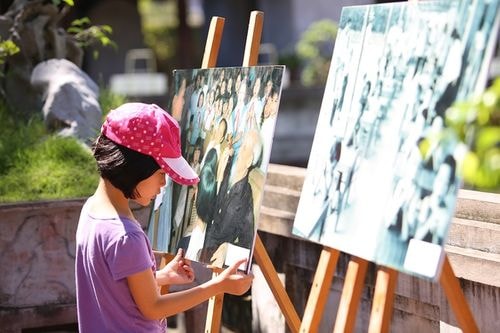 |
| The photo exhibition Children in Wartime introduces nearly 100 photos capturing the daily life, study, and work of Vietnamese children during the resistance war. The photos are displayed at the Temple of Literature - Quoc Tu Giam in the Children's Book Fair on June 1 organized by Hanoi City. |
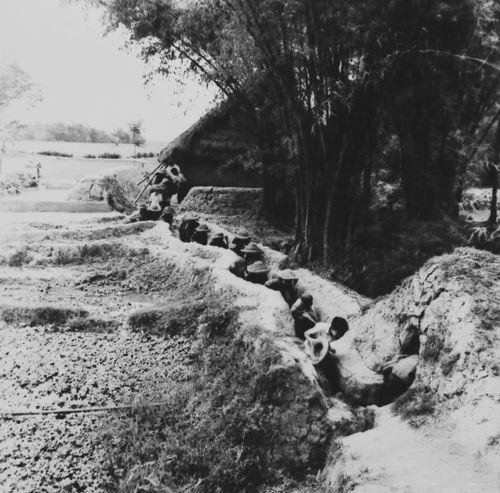 |
| When war broke out, the first lesson for students was to dig shelters, trenches, and weave straw hats to go to school. To ensure safety, schools dispersed classes to many locations, each with a system of trenches to avoid bombs and bullets. |
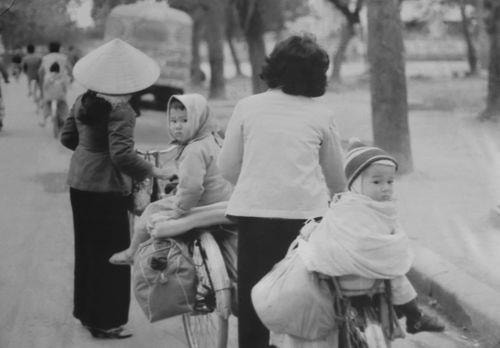 |
| Students and children from the city were evacuated to the countryside. Without electricity and without their parents, the children gradually learned to adapt to life in wartime. |
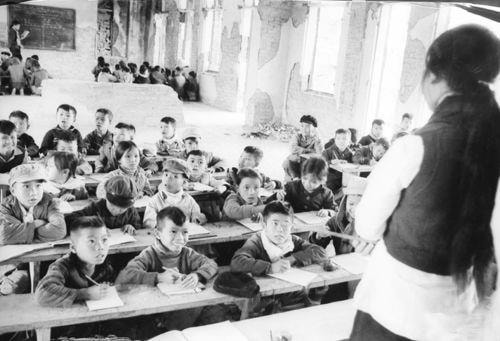 |
| Classes were held everywhere, in the cooperative yard, in people's houses... The school was destroyed by bombs but that did not stop the students from going to class. Grade 3 was in this corner, grade 5 was in that corner, separated by a wall that collapsed due to the pressure of the bomb. |
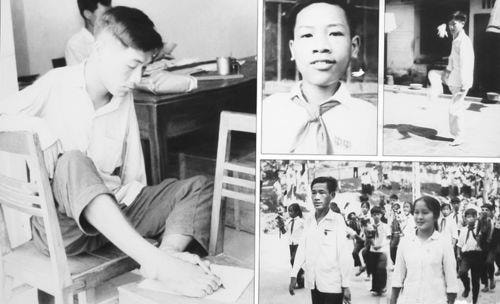 |
| In the midst of bombs and bullets, "child prodigies" like Nguyen Ngoc Ky, Dang Thai Son, and Tran Dang Khoa grew up one after another. Nguyen Ngoc Ky (Hai Hau, Nam Dinh) had his arms paralyzed since childhood, so he used his legs to practice writing instead of his hands. A good student and good poet, Nguyen Ngoc Ky later graduated from the Faculty of Literature, University of General Sciences and became a teacher for thousands of excellent literature students in his hometown. |
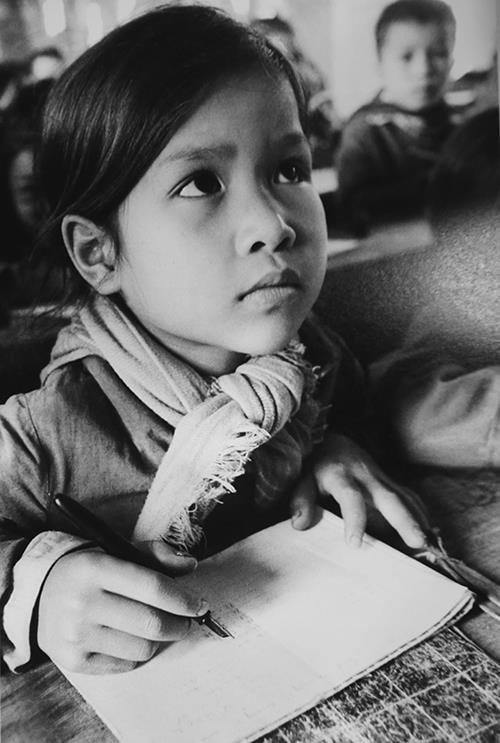 |
| The attentive faces of students while listening to lectures. Artist Luong Xuan Doan once felt, "Those days, those times are difficult to remember. I long to see my childhood in the beautiful faces like clear mirrors in each photo." |
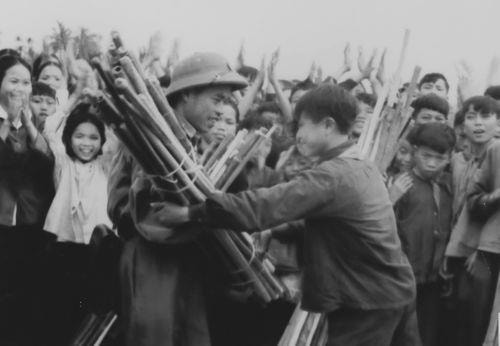 |
| In addition to their studies, wartime children also contributed significantly to the resistance movement with movements such as Small Plans, Thousand Good Deeds... In the photo, children are making Truong Son sticks to give to soldiers preparing to leave for military service. |
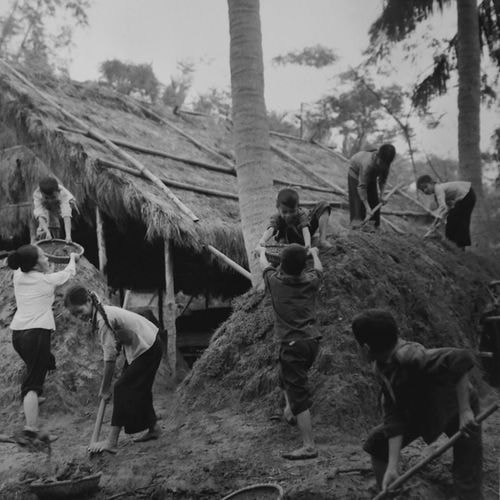 |
| Teachers and students of Hoa Loc Secondary School (Hau Loc, Thanh Hoa) dig trenches and build earthen ramparts around the classroom. |
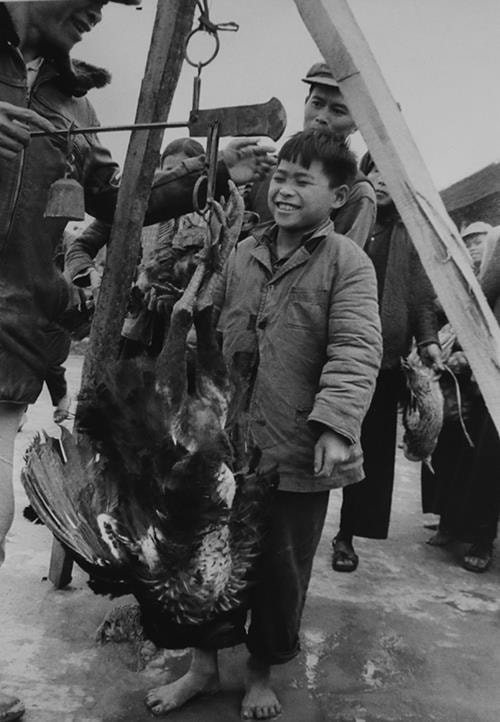 |
| Implement small-scale planning movement, raise chickens to sell to cooperatives. |
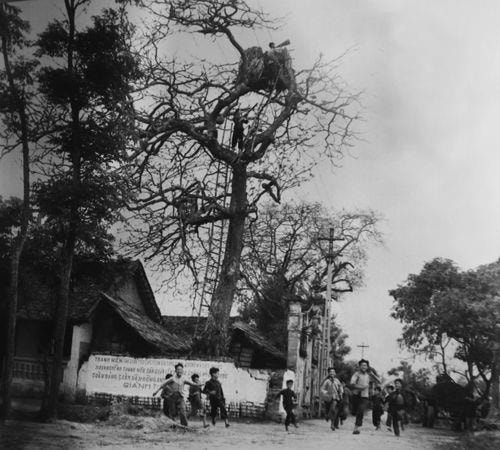 |
| Bombs and bullets could not drown out the laughter of children running and playing on the village streets in Dong Anh (Hanoi). On high watchtowers built on treetops, militiamen were on duty, ready to give timely warnings when planes were approaching. |
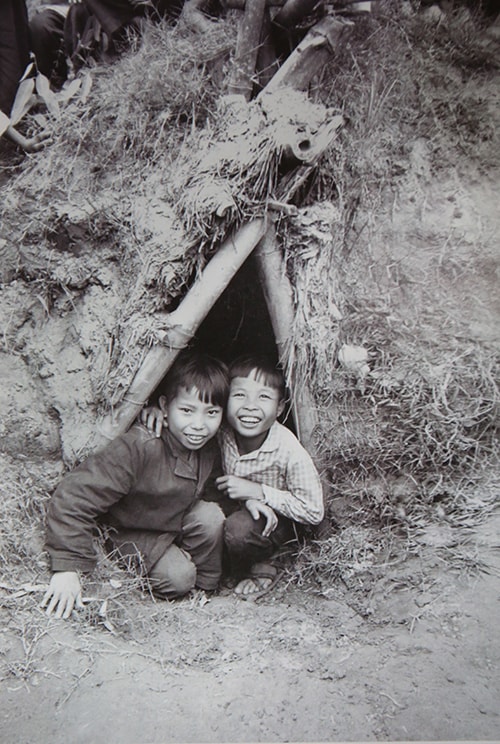 |
| Students smile next to an A-shaped bunker - a type of bunker built from straw and soil, quite sturdy to avoid bombs. |
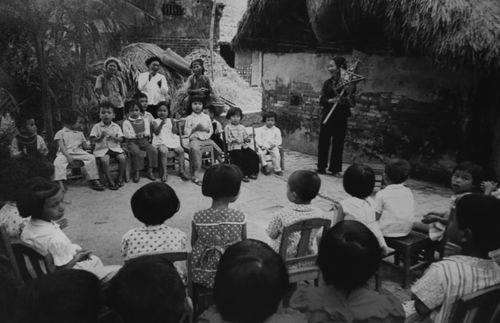 |
| Mid-Autumn Festival during wartime was still full of star lanterns and candies for children. |
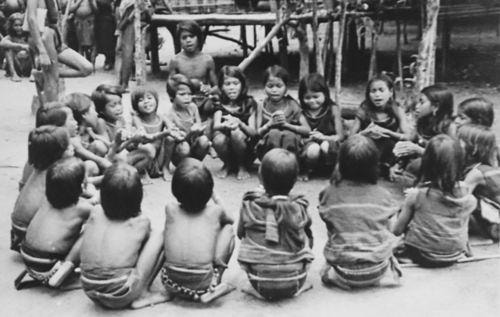 |
| In fierce war zones such as the Central Highlands front, the Southeast front... people and resistance soldiers still live and go to school. The photo captures a singing lesson of children in the Central Highlands. |
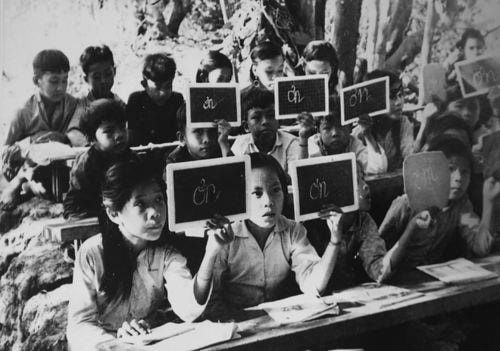 |
| A field classroom in Kinh Hang hamlet, Khanh Hung commune (Tran Van Thoi, Ca Mau) in 1970 - the time when the war was at its fiercest. Looking at old photos, Ms. Nguyen Thi Nhan, a retired literature teacher in Hanoi, recalls the day when American bombs were dropped on Kham Thien street, and she and her sister had to evacuate to Ha Bac (present-day Bac Giang and Bac Ninh). "The children who grew up under bombs and bullets back then are probably almost all grandparents now. We grew up like young shoots in the wind and storm, and hardships could not crush us. Children today should also know and look at these photos. Mentioning them is not to compare which era is more difficult, but to see that Vietnamese children are the same in all times, always overcoming difficulties and full of optimism," she said. The exhibition will last until June 5. |
According to VNE















